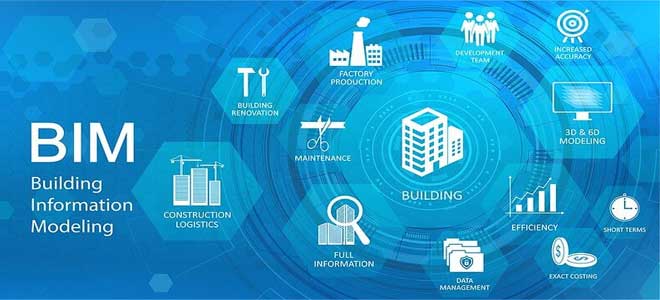BIM projects are revolutionizing the construction industry, and Europe is at the forefront of this technological movement. Building Information Modeling (BIM) is an innovative method of planning, designing, constructing, and managing buildings and infrastructure projects that are transforming the industry.
BIM projects have become increasingly popular in Europe, with the use of BIM in Europe expected to grow by nearly 20% in the next five years.
List of some best BIM projects in Europe
Here are some of the well-known BIM projects across Europe:-
Building of Technical University in Denmark
Building B310 at the Technical University of Denmark, a project that received international recognition, was completed entirely digitally. Even the construction workers had access to iPads on the job site to help them understand, communicate, and build the design.
The Building has specially created multipurpose labs and research spaces. BIM technology provides a fantastic chance for all stakeholders to successfully and accurately carry out this ambitious project.
Possible problems were also brought to light and fixed as they came to light, facilitating the project delivery process.
Statoil International Office in Norway
With operations in 37 countries and around 30,000 people, Statoil is a Norwegian energy producer. Recently, more than 2500 of its employees moved to their new office in Norway. The design aims to offer Statoil a fresh identity and position the business as a trailblazer and innovator in the global petroleum sector.
The crew was able to finish the whole project's above-ground construction in 20 months because of the usage of BIM technology, which exceeded in terms of deadlines.
AEC specialists have made a commendable effort with a project that stacks five lamellas that are 140 meters long and 23 meters wide, each of which is positioned differently to capture the greatest energy-saving solutions.
In addition to daylight saving, advanced facade design, and 85% energy recycling, BIM led to a deep understanding of sustainable design strategies.
Sagrada Familia Basilica in Spain
The Sagrada Familia Basilica is being built with the use of BIM technology, which helps to maintain the structure's original design, speed up construction, and increase site security.
To adequately depict the intricate aspects of the Basilica's design, which contained several distinctive and complicated architectural features; 3D BIM models were initially produced.
With the aid of these models, architects and engineers could see the plan in three dimensions, see any possible problems, and make the required adjustments before the building started. Then, by monitoring project timelines, tracking progress, and coordinating the work of many contractors, BIM technology was utilized to expedite the building process.
Using BIM 3D models, the sequence of the building process was simulated, possible conflicts detected, and resource usage optimized to reduce waste and delays.
Randselva Bridge in Norway
Some may find it absurd to think that a 634-meter bridge could be constructed without a single sketch being ordered, yet the designers and engineers of the Randselva Bridge in Norway have demonstrated that it is possible.
Without using a single 2D graphic, it is the longest bridge in the world that was created from scratch. This alone demonstrates the clever use of BIM technology in projects. The Sweco team, a Swedish engineering firm, was able to create a BIM model with more than 300,000 unique components and all the information required to realize their concept.
The bridge's widest span is around 200 meters, and its highest point, where the deck is located, is 55 meters above sea level.
Futurium building in Germany
The Futurium, a model project for the application of BIM globally, is envisioned as a cultural hub featuring a museum, laboratory, and platform for addressing future challenges to holding exhibitions and events.
The project was designed with exceptional and top structural ideas to give the building's exterior the appearance of something futuristic.
In addition to the structural design, façade engineering, and general building functionality, BIM technology was used to facilitate calculations and representations.
The façade not only draws in visitors with its play of light and shadow, but it also aids in the design's goal of energy effectiveness.
Manchester town hall in the UK
The customer received more value from incorporating BIM technology into the project design than they had anticipated. By skillfully engaging with and displaying the interventions in the existing area, it first and foremost demonstrated its value.
The customer was assisted in visualizing and implementing the optimum design intervention by the ability to merge the design possibilities put forth by many stakeholders into a single 3D model and test it on-site.
The cooperation and coordination methods were expertly optimized for a project of this caliber, making it simple for even the many client teams to communicate with the design and construction experts at any time.
In its time, the Hall was hailed among the greatest architectural examples in the country, a building of national significance listed as a grade II building.
Benefits of BIM
BIM projects in Europe offer a wide range of benefits to all involved. BIM is an integrated process that allows for better communication and collaboration between project stakeholders, enabling the team to make more informed decisions during the design and construction process.
With the use of BIM, projects can be completed quicker, with fewer errors, and with greater accuracy. In addition, BIM projects can result in greater cost savings, as BIM can reduce material and labor costs, allowing for the completion of projects on time and within budget.

